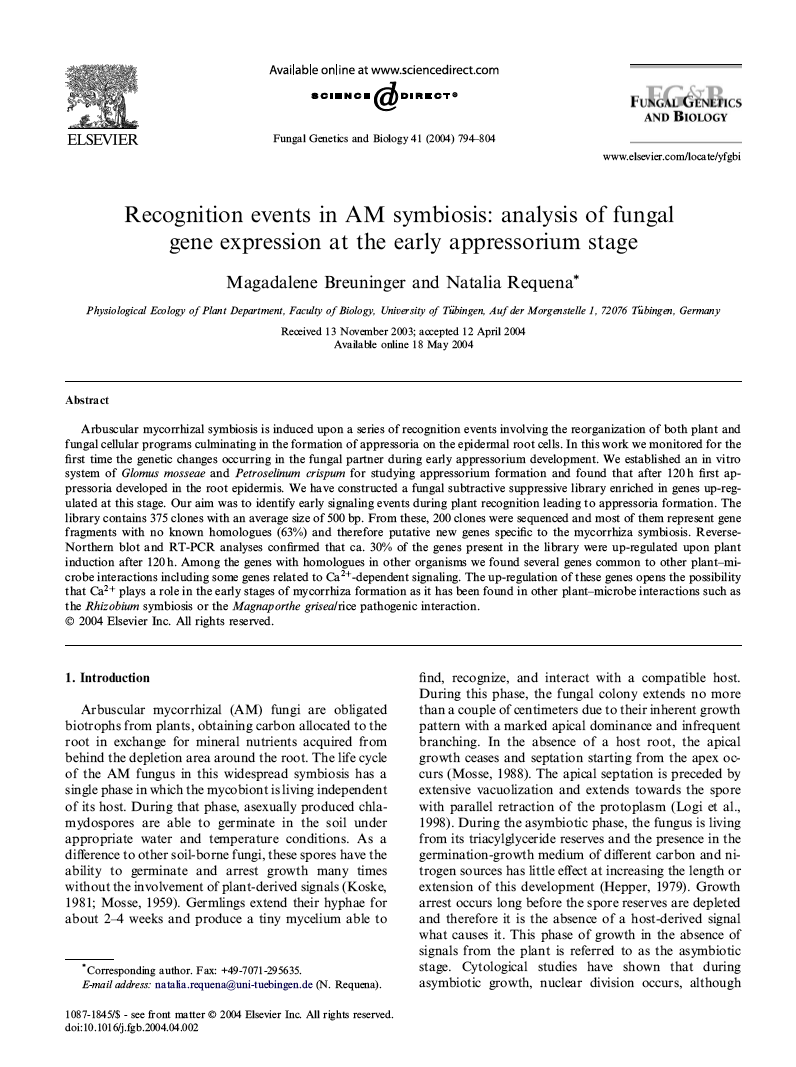Breuninger and Requena 2004
Recognition events in AM symbiosis: Analysis of fungal gene expression at the early appressorium stage. Fungal Genet. Biol. 41: 794-804.
Breuninger M., Requena N.
Abstract
Arbuscular mycorrhizal symbiosis is induced upon a series of recognition events involving the reorganization of both plant and fungal cellular programs culminating in the formation of appressoria on the epidermal root cells. In this work we monitored for the first time the genetic changes occurring in the fungal partner during early appressorium development. We established an in vitro system of Glomus mosseae and Petroselinum crispum for studying appressorium formation and found that after 120 h first appressoria developed in the root epidermis. We have constructed a fungal subtractive suppressive library enriched in genes up-regulated at this stage. Our aim was to identify early signaling events during plant recognition leading to appressoria formation. The library contains 375 clones with an average size of 500 bp. From these, 200 clones were sequenced and most of them represent gene fragments with no known homologues (63%) and therefore putative new genes specific to the mycorrhiza symbiosis. Reverse-Northern blot and RT-PCR analyses confirmed that ca. 30% of the genes present in the library were up-regulated upon plant induction after 120 h. Among the genes with homologues in other organisms we found several genes common to other plant-microbe interactions including some genes related to Ca2+-dependent signaling. The up-regulation of these genes opens the possibility that Ca2+ plays a role in the early stages of mycorrhiza formation as it has been found in other plant-microbe interactions such as the Rhizobium symbiosis or the Magnaporthe grisea/rice pathogenic interaction.
![]()


